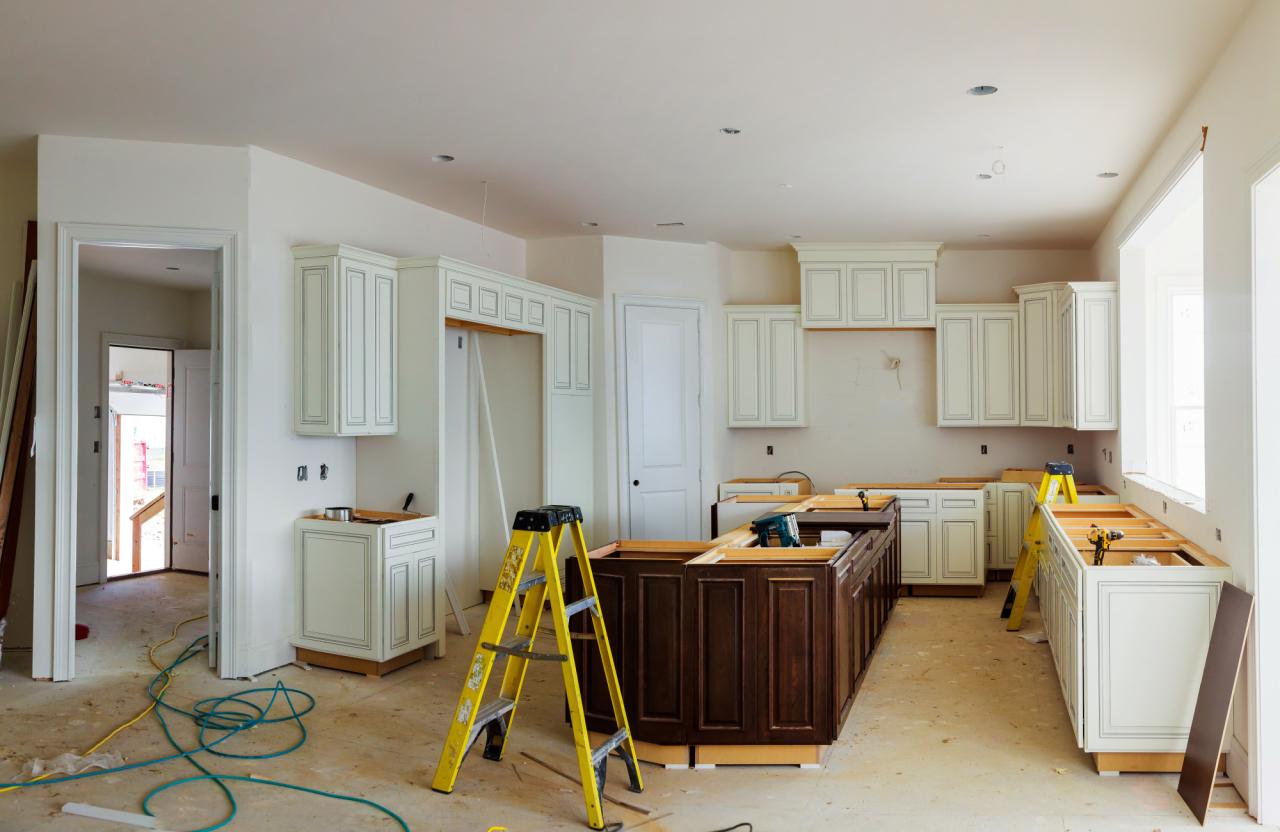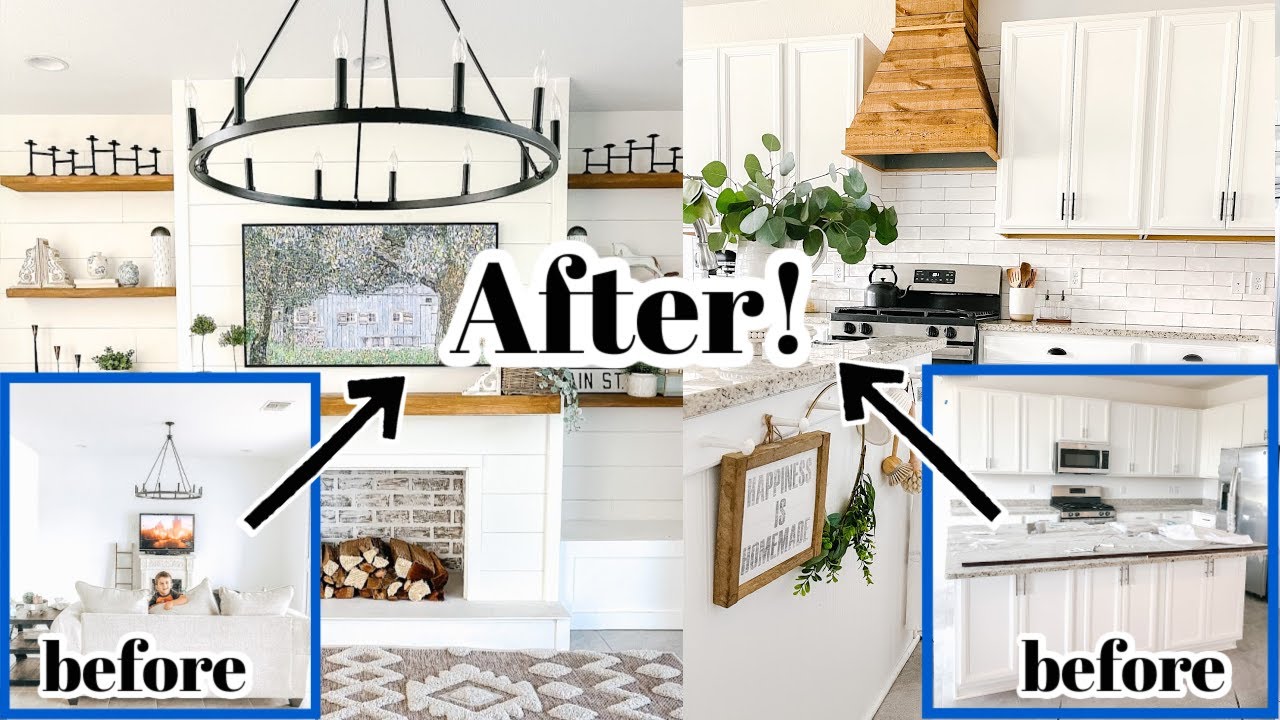DIY home remodel is a rewarding journey that allows you to personalize your living space and add value to your property. From updating kitchens and bathrooms to enhancing outdoor areas, the possibilities are endless. However, embarking on a DIY home remodel project requires careful planning, budgeting, and a solid understanding of basic construction techniques.
This guide will delve into the essentials of DIY home remodeling, providing you with the knowledge and resources to tackle your projects confidently. We’ll explore planning and budgeting, essential tools and techniques, and specific project ideas for various areas of your home. Whether you’re a seasoned DIY enthusiast or a novice looking to take on a smaller project, this comprehensive guide will empower you to transform your home into a reflection of your unique style and needs.
Basic DIY Home Remodeling Techniques

Embarking on a DIY home remodel can be an exciting and rewarding experience, allowing you to transform your living space into a reflection of your personal style. To successfully tackle this project, a fundamental understanding of basic DIY techniques is crucial. This section will explore essential carpentry, plumbing, electrical, drywall, painting, and flooring concepts, providing you with the knowledge and skills to confidently embark on your home remodeling journey.
Carpentry Techniques
Carpentry forms the backbone of many home remodeling projects, involving the skillful manipulation of wood to create structures, furniture, and decorative elements. Mastering basic carpentry techniques, such as cutting, measuring, and joining wood, is essential for achieving accurate and durable results.
Cutting Wood
Cutting wood accurately is fundamental to carpentry. Various tools, including saws, are used for different types of cuts.
- Hand saws are versatile tools used for straight and curved cuts. They come in various sizes and tooth configurations, depending on the type of wood and the desired cut.
- Circular saws are power tools that provide fast and precise cuts. They are ideal for straight cuts and can be equipped with different blades for various materials.
- Jigsaws are used for intricate and curved cuts. They are equipped with a blade that oscillates back and forth, allowing for precise control over the cut.
Measuring Wood
Accurate measurements are crucial for ensuring that your carpentry projects fit perfectly.
- Measuring tapes are essential tools for determining lengths and widths. They come in various lengths and are typically marked in inches and centimeters.
- Squares are used to ensure that cuts are made at right angles. They come in various sizes and materials, including metal and plastic.
- Levels are used to ensure that surfaces are horizontal or vertical. They come in various lengths and can be used for both small and large projects.
Joining Wood
Joining wood pieces together securely is a crucial aspect of carpentry. Various methods can be employed, each with its own advantages and disadvantages.
- Nails are a common method for joining wood. They are driven into the wood using a hammer, creating a secure bond.
- Screws offer a more secure and durable bond than nails. They are driven into the wood using a screwdriver, creating a threaded connection.
- Glue is a versatile method for joining wood, especially for delicate or intricate projects. It provides a strong bond when applied correctly.
- Dowels are cylindrical pieces of wood that are used to join two pieces of wood at a right angle. They are inserted into pre-drilled holes and provide a strong and stable connection.
Plumbing Concepts
Plumbing is an integral part of any home, ensuring the efficient delivery and disposal of water. Understanding basic plumbing concepts is essential for troubleshooting common issues and performing minor repairs.
Troubleshooting Common Plumbing Issues
Plumbing problems can arise from various factors, including leaks, clogs, and low water pressure.
- Leaks can occur in pipes, faucets, and fixtures. Identifying the source of the leak is crucial for addressing the problem effectively. Common causes include worn-out seals, cracked pipes, or loose connections.
- Clogs can occur in drains, sinks, and toilets. They are often caused by hair, grease, or other debris accumulating in the pipes. Using a plunger or drain snake can help remove clogs.
- Low water pressure can be caused by various factors, including mineral buildup in pipes, a faulty pressure regulator, or a leak in the system. Identifying the cause of low water pressure is essential for restoring normal water flow.
Electrical Concepts, Diy home remodel
Electricity powers our homes and appliances, making it essential to understand basic electrical concepts for safety and efficiency.
Troubleshooting Common Electrical Issues
Electrical problems can range from minor nuisances to serious hazards. It is crucial to address them promptly and correctly.
- Flickering lights can be caused by loose connections, faulty bulbs, or overloaded circuits. Identifying the cause of flickering lights is essential for restoring proper illumination.
- Tripped circuit breakers indicate an overload in the circuit. This can be caused by too many appliances running simultaneously or a short circuit. Identifying the cause of the overload is crucial for preventing future problems.
- Outlet problems can include loose connections, faulty wiring, or damaged outlets. Identifying the source of the problem is essential for restoring proper functionality.
Drywall Installation
Drywall is a common material used for interior walls and ceilings. Installing drywall involves several steps, each requiring careful attention to detail.
Installing Drywall
Drywall installation involves attaching sheets of drywall to framing using screws or nails.
- Framing provides support for the drywall and creates the shape of the walls and ceilings. It typically consists of wood studs or metal tracks.
- Drywall sheets are typically 4 feet wide and 8 feet long. They are available in various thicknesses, depending on the application.
- Screws or nails are used to attach the drywall sheets to the framing. They should be driven in at a specific angle and depth to ensure proper attachment.
- Joint compound is used to fill the gaps between the drywall sheets and create a smooth surface. It is applied in several layers and sanded smooth after each layer dries.
- Tape is used to reinforce the joints between the drywall sheets. It is embedded in the joint compound and provides added strength to the seams.
Painting Techniques
Painting is a versatile way to refresh and transform your home’s interior and exterior. Mastering basic painting techniques ensures a smooth and professional finish.
Painting Techniques
Painting involves applying paint to surfaces using brushes, rollers, or sprayers.
- Preparation is crucial for achieving a smooth and even finish. This involves cleaning the surface, repairing any damage, and applying primer if necessary.
- Brushwork involves using a brush to apply paint to corners, edges, and small areas. Proper brush technique ensures smooth and even coverage.
- Roller work involves using a roller to apply paint to large areas. Choosing the right roller cover and using proper rolling techniques ensures smooth and even coverage.
- Spray painting involves using a sprayer to apply paint to surfaces quickly and efficiently. It requires careful preparation and proper technique to avoid overspray and uneven coverage.
Flooring Installation
Flooring is an essential element of any home, providing both functionality and aesthetics. Installing flooring involves several steps, each requiring careful planning and execution.
Installing Flooring
Flooring installation involves laying down flooring materials, such as hardwood, tile, or carpet, over a subfloor.
- Subfloor preparation is crucial for ensuring a level and stable surface for the flooring. This may involve repairing any damage, leveling the subfloor, and adding moisture barriers if necessary.
- Flooring material selection involves choosing the right type of flooring for your needs and budget. Hardwood, tile, carpet, laminate, and vinyl are common flooring options.
- Installation techniques vary depending on the type of flooring. Hardwood flooring is typically nailed or glued down, while tile is installed using mortar. Carpet is typically stretched and secured using tack strips.
- Finishing touches may include adding moldings, trim, or transition strips to complete the flooring installation. These details add a polished look and create a seamless transition between different flooring types.
Outcome Summary

With a well-defined plan, the right tools, and a willingness to learn, you can successfully tackle DIY home remodeling projects. Remember to prioritize safety, seek professional assistance when necessary, and enjoy the process of creating a space that truly reflects your personality. From updating outdated fixtures to creating a more functional layout, DIY home remodeling can be a rewarding and transformative experience.
DIY home remodels can be incredibly rewarding, allowing you to personalize your space and add value to your home. If you’re looking for a fun and creative project to do in between stages of your remodel, why not try making your own boba?
You can find a great guide for DIY boba here , and once you’ve mastered the art of boba making, you can even set up a fun little boba station in your newly remodeled kitchen!




